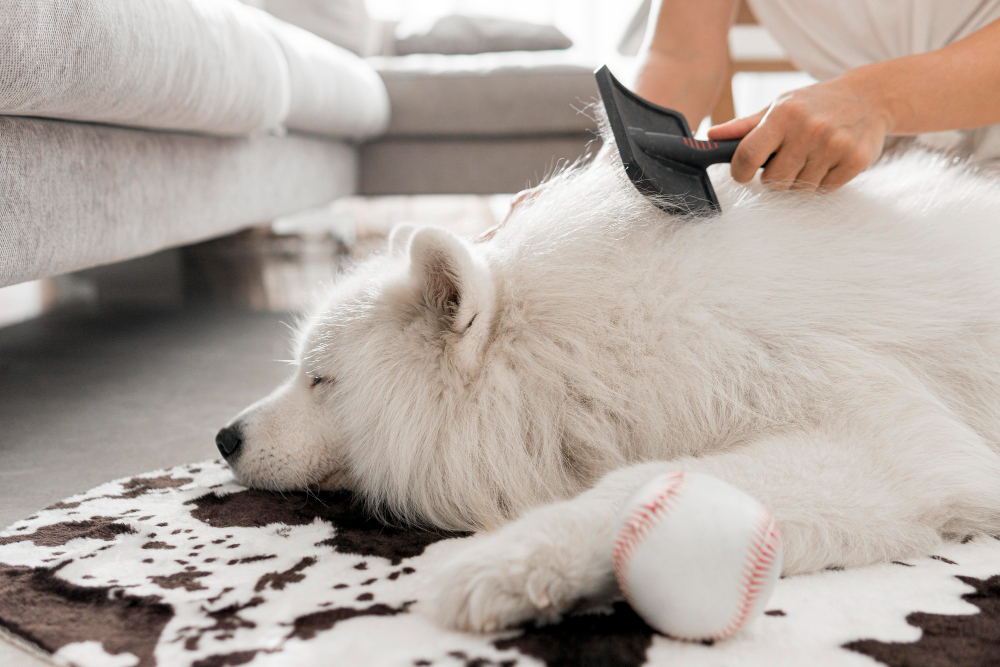Canine alopecia, a condition that causes hair loss in dogs, is both a prevalent and concerning issue for pet owners. This article aims to address the concerns of our readers, providing valuable information on the reason of dog hair fall, prevention strategies, and treatment options for dogs suffering from alopecia. In doing so, we will focus on specific breeds and age groups, such as hair fall in puppies and German Shepherds, to offer tailored advice for maintaining a healthy coat.
Reasons for Hair Loss in Dogs and Puppies
Hair fall in puppies and adult dogs can occur for various reasons, with some breeds like German Shepherds being more susceptible to certain types of hair loss. The following are some common factors that contribute to hair loss in dogs:
- Genetics: Some breeds are more prone to alopecia due to their genetic makeup. For example, my German Shepherd hair falling could be attributed to breed-specific conditions such as pattern baldness or follicular dysplasia.
- Hormonal imbalances: Hormonal issues, like hypothyroidism or Cushing’s disease, can cause hair loss in dogs by disrupting the normal hair growth cycle.
- Allergies: Allergic reactions to environmental factors or food can cause skin inflammation and hair loss in dogs.
- Stress: Physical and emotional stress can lead to hair loss, particularly in puppies experiencing a new environment or significant life changes.
- Parasites: External parasites like fleas, ticks, and mites can cause hair loss and skin irritation in dogs.
Can Dog Hair Grow Back After Alopecia?
The possibility of hair regrowth in dogs with alopecia largely depends on the cause and extent of the hair loss. In some cases, addressing the underlying issue may lead to hair regrowth. For example, if hair fall in puppies is due to a flea infestation, treating the infestation might allow the hair to grow back.
However, in cases where the hair follicles are permanently damaged, hair regrowth might not be possible. Conditions like scarring alopecia, which involves the destruction of hair follicles, often result in permanent hair loss.
Is Dog Alopecia Painful?
Alopecia in dogs can manifest in different ways, with some causes leading to discomfort or pain while others do not. For instance, if the reasons for hair loss in puppies include a bacterial or fungal infection, the inflammation and irritation associated with these infections can cause pain.
On the other hand, hair loss due to hormonal imbalances might not be directly painful, but can cause secondary skin issues that may lead to discomfort. It is essential to consult a veterinarian to determine the specific cause of hair loss and address any associated pain or discomfort.
Preventing Alopecia in Dogs
Taking proactive steps to prevent hair fall in puppies and adult dogs is crucial for maintaining a healthy coat. Consider the following guidelines for preventing hair loss in dogs:
- Diet: Feed your dog a balanced and nutritious diet that supports healthy skin and coat. Look for dog food containing essential fatty acids, vitamins, and minerals.
- Grooming: Regular grooming helps remove loose hair, stimulate the skin, and distribute natural oils across the coat. It also allows you to monitor your dog’s coat health and identify any issues early on.
- Stress management: Minimize stress by providing a stable environment, consistent routine, and opportunities for mental and physical stimulation.
- Parasite prevention: Protect your dog from external parasites by using veterinarian-recommended flea and tick prevention products and maintaining a clean living environment.
- Choose a good kennel: Genetics is a very important factor in ensuring your dog’s health. When buying an animal, you should look for good kennels where cases of genetic diseases are not recurrent.
Treating Hair Loss in Dogs
There are several treatment options available for canine alopecia, ranging from medication to supplements and topical solutions. It is crucial to consult a veterinarian for a tailored treatment plan that addresses the specific cause of your dog’s hair loss. Some possible treatments include:
- Medications: Depending on the cause, your veterinarian may prescribe medications such as antibiotics, antifungal drugs, or anti-inflammatory drugs to treat the underlying condition causing hair loss.
- Supplements: Nutritional supplements containing essential fatty acids, vitamins, and minerals can support hair regrowth and overall skin health.
- Topical treatments: In some cases, topical solutions like medicated shampoos, creams, or ointments may be recommended to address skin issues or promote hair regrowth.
- Lifestyle changes: If the reasons for hair loss in puppies or adult dogs are related to allergies or stress, implementing lifestyle changes like altering their diet, providing a hypoallergenic environment, or reducing stress triggers can help manage hair loss.
Conclusion
In conclusion, canine alopecia is a complex condition with various causes, including genetics, hormonal imbalances, allergies, stress, and parasites. By understanding the reason of dog hair fall and taking preventive measures, pet owners can help maintain their dog’s healthy coat. Additionally, consulting a veterinarian for a proper diagnosis and tailored treatment plan is essential in addressing hair loss in dogs effectively.
Remember, early intervention and prevention are key factors in ensuring a healthy, happy life for your furry friend. Monitor your dog’s coat regularly and don’t hesitate to seek professional advice if you notice any signs of hair loss or skin issues.

